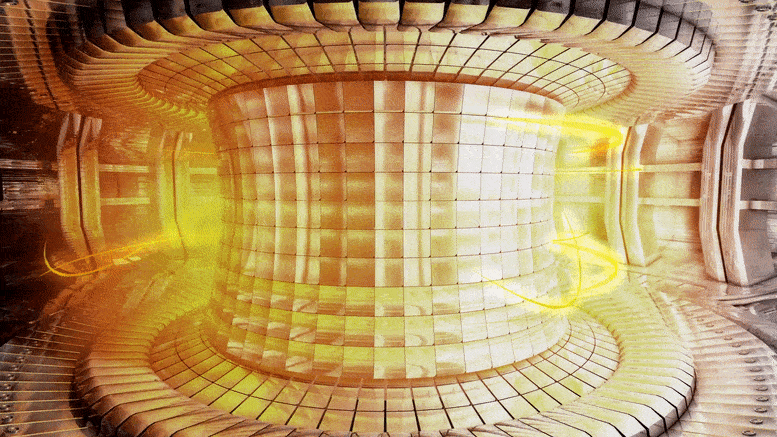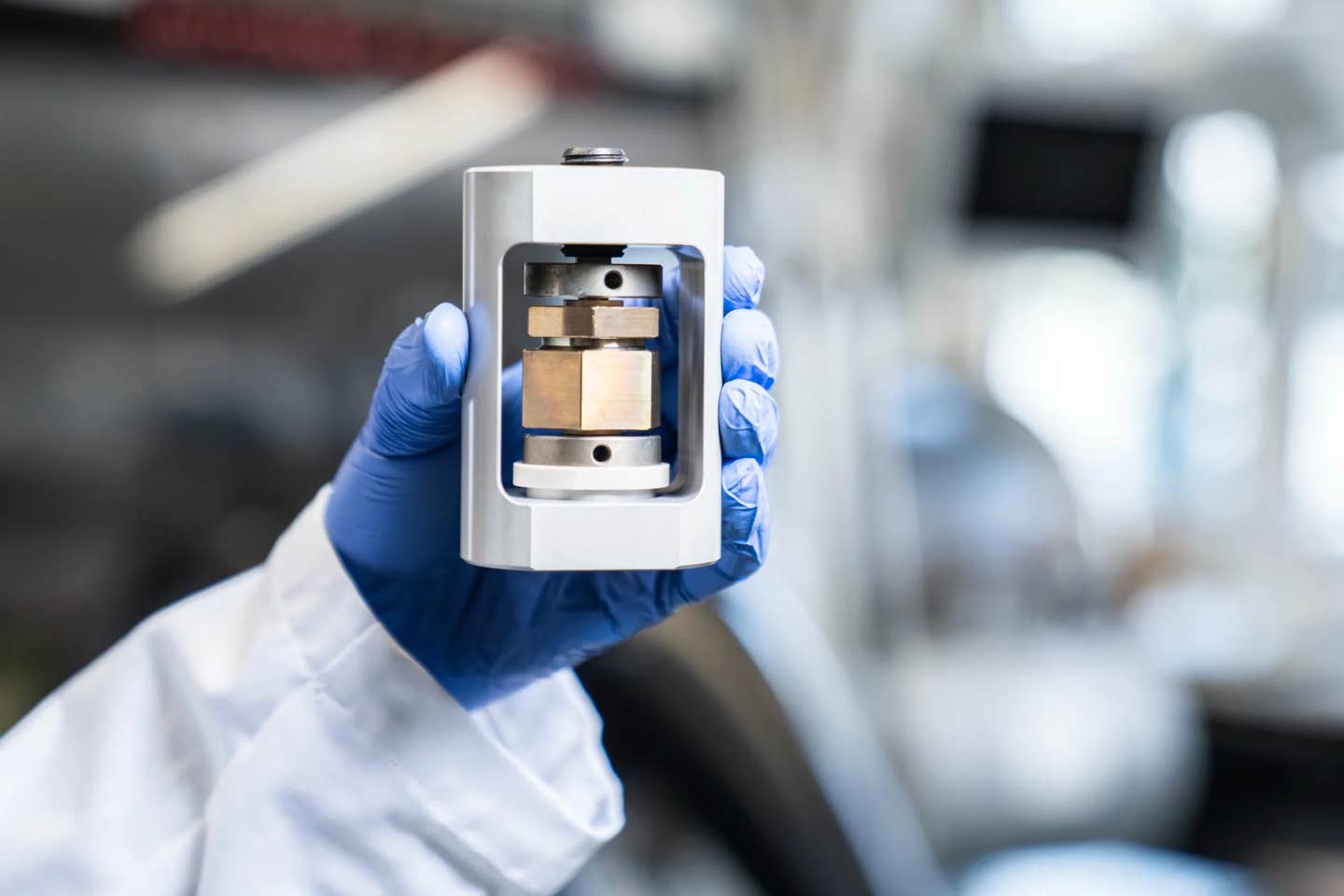Scientists set a new fusion world record – millions of degrees hotter than sun
During its latest plasma campaign, KSTAR achieved a new record by sustaining plasma with ion temperatures of 100 million degrees Celsius

MUSE, the first stellarator built at PPPL in 50 years and the first ever to use permanent magnets. (CREDIT: Michael Livingston / PPPL Communications Department)
The Korea Institute of Fusion Energy (KFE) has recently made a significant breakthrough in fusion research using the Korean artificial sun, KSTAR. During its latest plasma campaign, KSTAR achieved a new record by sustaining plasma with ion temperatures of 100 million degrees Celsius for 48 seconds.
The campaign, which spanned from December 2023 to February 2024, also marked the successful implementation of upgraded tungsten divertors, a key component in maintaining plasma stability and temperature.
KSTAR, a superconducting tokamak, has been at the forefront of fusion research, particularly in long-pulse plasma operations. In 2018, KSTAR first achieved a plasma temperature of 100 million degrees and later extended this duration to 30 seconds in 2021.
The Korea Institute of Fusion Energy (KFE) has recently made a significant breakthrough in fusion research using the Korean artificial sun, KSTAR. (CREDIT: Korea Institute of Fusion Energy)
The most recent campaign has surpassed previous records, achieving not only a longer duration at the extreme temperature but also maintaining the high confinement mode (H-mode) for over 100 seconds. H-mode is essential for sustaining high-temperature, high-density plasmas, crucial for efficient fusion reactions.
The significant improvements in KSTAR's performance are attributed to several technological advancements. First, the replacement of carbon-based divertors with tungsten has shown remarkable results.
The tungsten divertors managed to increase the surface temperature by only 25% under similar heat conditions compared to their carbon predecessors, enhancing the tokamak's ability to handle high heating powers over longer pulses.
Related Stories
Dr. Si-Woo Yoon, Director of the KSTAR Research Center, emphasized the effectiveness of the new components, stating, "Despite being the first experiment run in the environment of the new tungsten divertors, thorough hardware testing and campaign preparation enabled us to achieve results surpassing those of previous KSTAR records in a short period."
He further outlined the future objectives: "To achieve the ultimate goal of KSTAR operation, we plan to sequentially enhance the performance of heating and current drive devices and also secure the core technologies required for long-pulse high-performance plasma operations."
The ultimate aim for KSTAR is ambitious: to sustain plasma operations for 300 seconds with ion temperatures exceeding 100 million degrees. Achieving this goal requires not only hardware upgrades but also advancements in control techniques. The KSTAR team is focusing on incorporating additional tungsten components and employing artificial intelligence for real-time feedback control to refine device performance.
KFE President, Dr. Suk Jae Yoo, highlighted the broader implications of these advancements: “This research is a green light for acquiring core technologies required for the fusion DEMO reactor”, indicating that these developments are pivotal for the future of fusion energy, including the operation of ITER and the construction of DEMO reactors.
In addition to hardware advancements, the KSTAR team has been collaborating with international researchers to enhance plasma stability. A notable achievement in this domain is the development of an error field (EF) optimization model with researchers from the Princeton Plasma Physics Laboratory (PPPL) in the USA.
This model utilizes KSTAR’s external magnetic coils to fine-tune the magnetic fields that control plasma instabilities at both the core and edge. The successful implementation of this model was documented in a publication titled “Tailoring tokamak error fields to control plasma instabilities and transport” in Nature Communications in February 2024.
These successes are not just milestones for KSTAR but are also significant steps towards the practical realization of fusion energy, offering a promising outlook for sustainable and clean energy in the future. Through continuous improvement and international collaboration, the KSTAR project is paving the way for a new era in energy production, aligning technological progress with ecological considerations.
Types of Fusion Reactors
There are several types of fusion reactors under development worldwide. Here are some of the prominent ones:
Tokamak Reactors:
Examples: ITER (International Thermonuclear Experimental Reactor), JET (Joint European Torus), EAST (Experimental Advanced Superconducting Tokamak)
Tokamaks use magnetic confinement to contain the hot plasma, aiming to achieve conditions where fusion reactions can occur.
ITER, currently under construction in France, is the largest and most advanced tokamak project. It aims to demonstrate the feasibility of fusion power on a large scale.
While ITER is not expected to generate electricity for the grid, it aims to produce 500 megawatts of fusion power from an input of 50 megawatts of heating power (Q=10) during its experimental phase.
Stellarator Reactors:
Examples: Wendelstein 7-X (Germany), LHD (Large Helical Device) in Japan
Stellarators also use magnetic confinement like tokamaks but employ a different design to achieve the same goal of confining and heating the plasma.
Wendelstein 7-X is one of the most advanced stellarator projects. It aims to demonstrate continuous operation of a fusion reactor.
Inertial Confinement Fusion (ICF) Reactors:
Examples: National Ignition Facility (NIF) in the US, Laser Mégajoule (LMJ) in France
ICF reactors use high-energy lasers or particle beams to compress and heat a target containing fusion fuel (typically deuterium and tritium).
NIF aims to achieve ignition, where the fusion reactions produce more energy than the input energy from the lasers. However, as of the last update, ignition had not yet been achieved.
Magnetic Confinement Fusion (MCF) Reactors:
These are a broader category encompassing both tokamaks and stellarators, which use magnetic fields to confine the plasma.
The power outputs of experimental MCF reactors are typically measured in terms of fusion energy gain (Q), which represents the ratio of fusion power produced to the input power required to sustain the reaction. However, commercial-scale power production has not yet been achieved.
For more science news stories check out our New Innovations section at The Brighter Side of News.
Note: Materials provided above by The Brighter Side of News. Content may be edited for style and length.
Like these kind of feel good stories? Get the Brighter Side of News' newsletter.



